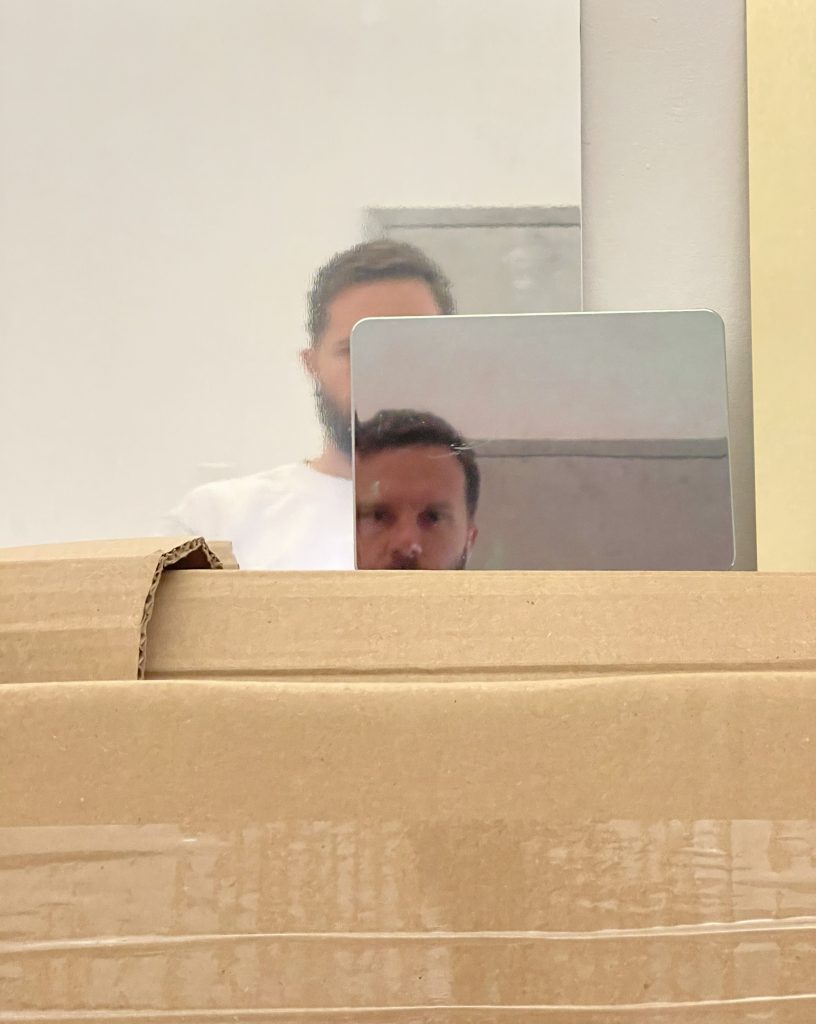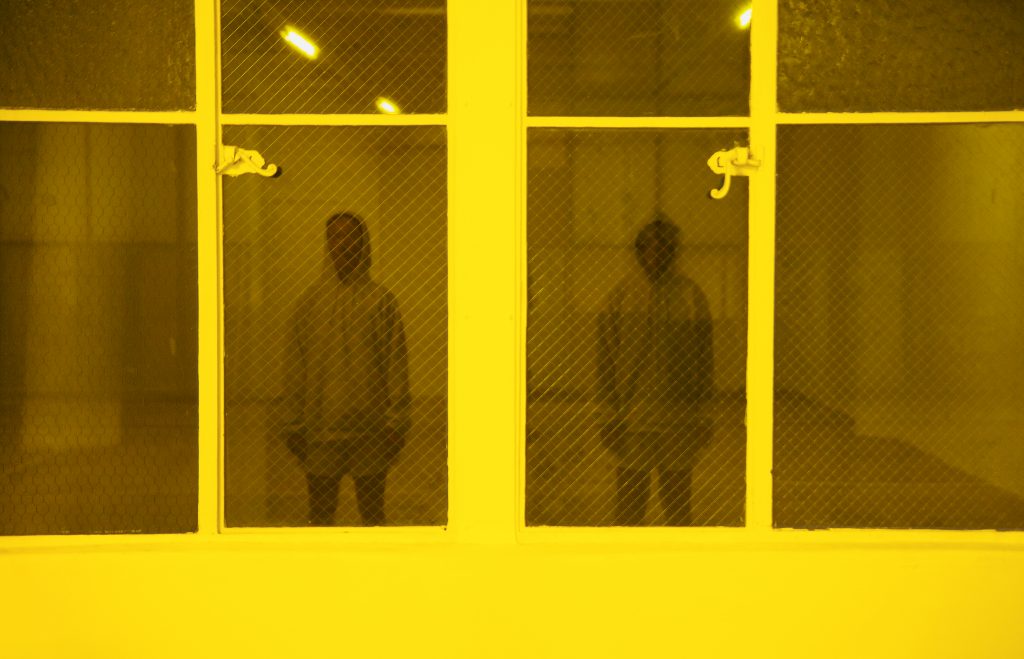Barnett Cohen

Barnett Cohen shapeshifts between poet, performance maker, painter, and political activist. Born in South Africa, Cohen now lives between Los Angeles and New York. His anti-disciplinary practice proposes a kaleidoscopic queer surrealism. Cohen accumulates language and symbols and disorganises them into alternative logics, materialising shape and sound into absurdist and anarchic non-sense. He has presented work at the Institute of Contemporary Art, JOAN, LAXART, 356 Mission, Human Resources, The Box, and REDCAT in Los Angeles, and at The Center For Performance Research, The Exponential Festival, The International Center of Photography, and JDJ in New York. In 2017, Cohen founded the Mutual Aid Immigration Network (MAIN), a trilingual free assistance hotline for people detained in immigration detention centres across the United States.
While in residence at Rupert, Cohen will spend time lying on the soil, handling the earth and trees, and walking in intentional circles. He will embark on a new text-based score for performance that uses as its overarching structure the tension between freedom, play, and constraint. From a poetic, almost syntactical perspective, he will push, warp, and manipulate the expectation of meaning we ask from language into less legible sonic space.
Image above: from Barnett Cohen’s personal archive.
Shapeshifting. Between performativity and activism. An interview with artist Barnett Cohen.
by Augustė Verikaitė (Rupert)
-Can you briefly describe your art practice and general concerns or themes that your work explores?
I am a visual artist who shapeshifts between poet, performance maker, and painter. I write text-based scores for performance that document and synthesize our pixelated present of ruined meaning, anxious forces, neurotic tendencies, and looping violence. The scores contain my writing and a wide variety of found language I accumulate from personal conversations, what I read, overhear, or encounter online–all of which are footnoted. Based on the scores, my performances articulate a kaleidoscopic queer surrealism through constellations of futuristic thought forms, bodily shapes, and calls to subversive action. The performances are combinations of speech and choreographed movement that are hilariously absurd, deeply intuitive, and highly political.
-What is the importance of performativity in your work and how did it first appear in your practice?
I started by writing lists of words in journals that I numbered out of order so as to completely erase any sense of narrative or chronology within the work. These rudimentary lists became the texts for some of my earliest performances where I instructed audiences to close their eyes, and often provided them with mylar eye masks. In these works, I was primarily interested in the performance of language within the mind. How simple words contain multitudes. The word mother is an ocean of meaning and my internal visual landscape will be different from yours. My visual concept of mother is different from your visual concept of mother. As it is for the word car or mountain or cheese. After grounding my practice in these types of performances, I began composing texts or scores for performances in which the audience was situated in the round and were directly approached by the performers. There is no fourth wall in my work regardless of whether the performances occur in the round, on a stage, or outside. The performers are always iterating directly to the audience; I use iterate as opposed to speak or proclaim as there is an element of repetition in my writing. I generally prefer that the audience move with the performance but, recently, I have had some opportunities to provide the audience with chairs, which enhances their ability to listen. On one hand, this is good. I want the audience to hear the writing. On the other hand, they become a more passive entity, at a remove from the implications of the writing. The value, going back to your question, of performativity is that it imbues language with a social function. A seated audience is not always as aware of this function as a standing audience (I am here accounting for accessibility. Accessibility is never reduced in my thinking as chairs are always provided. I do not demand that people stand.) When the social function of my performances is enacted what they do is give voice to a quiet panic that underlies our current collective existence. This panic is very loud at the moment. The best and most frequent feedback I receive is that my writing ends up in people’s dreams, which evidences that I (or rather the incredibly talented performers with whom I collaborate) have vaulted over day-to-day rationality and appeared in the space of taboo and shame and panic. The place that matters most.
-Amongst being an artist you are also a political activist – how has activism shaped you as a person as well as influenced your art practices?
The immigration system in the United States is a horror. It was a mess under Obama, got very bad during Trump, and is even worse under Biden (sorry Democrats, read the news!) This means that a lot of people end up in immigration detention centers run by publicly traded for-profit companies like CoreCivic (current stock price is $8.95 per share) or the Geo Group (current stock price is $7.55.) These companies make their sizable profits in the margin between what they earn in government contracts and what limited services they provide to people in their detention centers. People seeking asylum–or some who have lived in the United States for their entire adult lives–are placed by ICE (Immigration Customs Enforcement, a fairly new government agency started after 9/11) in these detention centers for months, if not years, while their cases for asylum or withholding of removal slowly snake their way through the backlogged immigration courts. And, then, most are summarily deported. Back in 2017, I started volunteering with an immigrants’ rights non-profit and my personal cell number got handed around within the detention centers. People were calling me 24 hours a day. So I started a hotline that I operate over Google Voice to liberate folks from these detention centers. Liberate is a sexy but ambiguous descriptor. In this case, it means that I connect folks who call with lawyers, bond funds, and occasionally non-profits that are able to accelerate their freedom from incarceration. Over the years, a few other activists have joined me (shoutout D & K) and we refer to ourselves as the Mutual Aid Immigration Network. (If you are ever unlucky enough to find yourself in immigration detention in the United States, call our free number 213.342.1143 and we can help!) I do not make any artwork about my labor as an activist as I find that activist artwork too ego-orientated to be of any impact. The absolute horror, however, that I have witnessed through my experience as an activist deeply contextualizes my artistic practice. The United States is fantastic at self-aggrandizement through propaganda but our freedom–American’s favorite word–is horseshit. I am not free when my government uses my tax dollars to torture people into signing their own deportation papers (in English btw, a language that they may not understand) and then forces those people on charter flights to countries they have fled where they may face certain death or destitution on return. This binary between what I have been conditioned to believe since I was a child and what is actually happening in the world means I believe in nothing. I believe that all constructs are fallacies. From gender to monogamy to the state to religion to prisons to the police–all simply reflect our current inability to imagine alternative organizing principles because we are afraid of a world without parameters. I write from that place, from the open space of awareness.
SOMETHINNGISALWAYSSWRONGG, JOAN, Los Angeles, 2019
